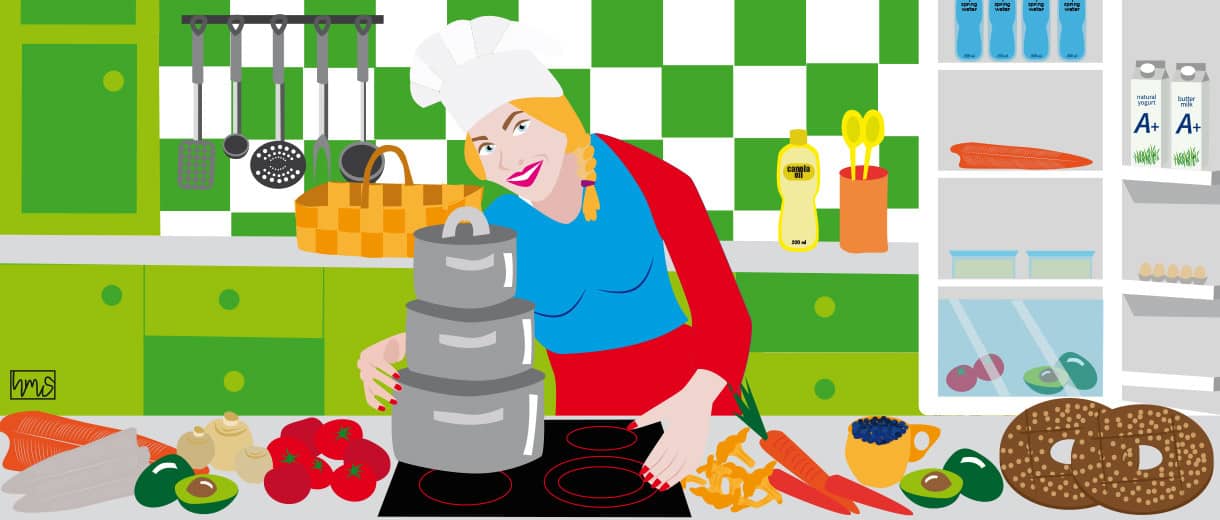7 Ways To Bring the Nordic Diet To Your Table
If you are among those foodies who dream to eat at Noma, the world’s finest restaurant in Copenhagen, but you can’t afford it, maybe you can still get full advantage of that healthy and tasty cuisine by following some of The Nordic Kitchen Manifesto principles at home.
The Nordic Diet is about getting back to basics so that you can make a real difference to your health, waistline, and happiness. Based on the Viking tradition of eating local and seasonal foods, it was created in 2004 in Denmark by nutritionists, scientists, and chefs to tackle the increasing problem of obesity and lifestyle-related diseases like cardiovascular illnesses, diabetes and some types of cancer.
Similar to the Mediterranean Diet, as both include lots of fresh vegetables and fruit, the Nordic Diet puts a strong emphasis on whole grain cereals (rye, barley, and oats, for example), fatty fish (mackerel, salmon, and herring), berries, legumes instead and sets severe limits on sugary and processed foods. One of the other notable differences is in the choice of oil: the Mediterranean diet swears on the name of olive oil – extra virgin, preferably – while Scandinavians prefer canola (rapeseed) oil, as it is local and thus less expensive.
Benefits for personal health and the environment
Powerhouse experts Arne Astrup, Professor Jennie Brand-Miller, and Christian Bitz, authors of the bestseller ‘The Nordic Way’ believe the Nordic Diet is the “best diet in the world” for getting healthy and staying lean, even into middle age and beyond. As leaders in obesity research, glycemic science, and healthy living, respectively, they’ve learned that eating a specific ratio of proteins, whole grains, and vegetables and incorporating traditional Nordic ingredients such as rye flour, skyr yogurt, and rapeseed oil into one’s diet are the most effective paths to overall health and stable weight.
Although the Nordic Diet has come to light more recently than the Mediterranean regime and has been studied less, there is evidence that it improves weight loss and can be beneficial in reducing blood pressure. The strong presence of Omega-3 fatty acids and sour dairy products can help combat chronic inflammation that is a major driver of many serious illnesses in our bodies. Some research suggests that Omega-3 acids could be beneficial for emotional and mental health as well as our cognitive functions. Fermented dairies such as yogurt and acidified buttermilk also improve the health of the intestine. And fewer pesticides and preservatives on fruits and vegetables mean less toxins overall.
As a plant-based diet, the Nordic Diet creates also less pollution because growing plants use fewer natural resources than herding cattle. Eating local and seasonal produce reduces the need for long conservation-methods and eliminates shipping foods across the world, therefore scaling down the carbon footprint of the entire food chain. Also, supporting local farmers and fishermen has a positive and enriching impact on the regional economy.
The main principles of the Nordic Diet
Some might argue that many of the Scandinavian ingredients that are at the heart of the Nordic food pyramid might be difficult to find or expensive in other countries. However, you can replace fresh fish with canned tuna or frozen seafood every now and then. Berries and mushrooms can actually be picked in many places, completely for free, and every country has a variety of local vegetables and fruits. Therefore, the concept of a healthy, local, sustainable, seasonal and highly palatable diet can be applied anywhere in the world.
Visiting a neighborhood market can give you ideas on which vegetables are in season at the moment, and it is easy as a pie to find Nordic recipes online that you can adapt to your local, fresh ingredients. When you plan your weekly food-shopping list, just keep in mind the following principles:
- Include organic, local and seasonal vegetables, fruit or berries in every meal
- Incorporate seafood to your meals two/three times a week, choosing sustainable, local kinds of fish
- Replace refined grains with whole grains for bread, pasta, rice, and other carbs – choose barley, oats, and rye over wheat
- Add some nuts, seeds, and pulses to your meals daily
- Eat less meat, and when you do, opt for grass-fed, organic qualities
- Drink lots of water, both fresh and in the form of infusions
- Prepare smaller portions, both to prevent overeating and to avoid food waste
Last but not least, enjoy cooking and eating. The kitchen should be the center-point of your house and mealtimes should be shared with friends and family as much as possible. Scandinavians love taking time over their food.





